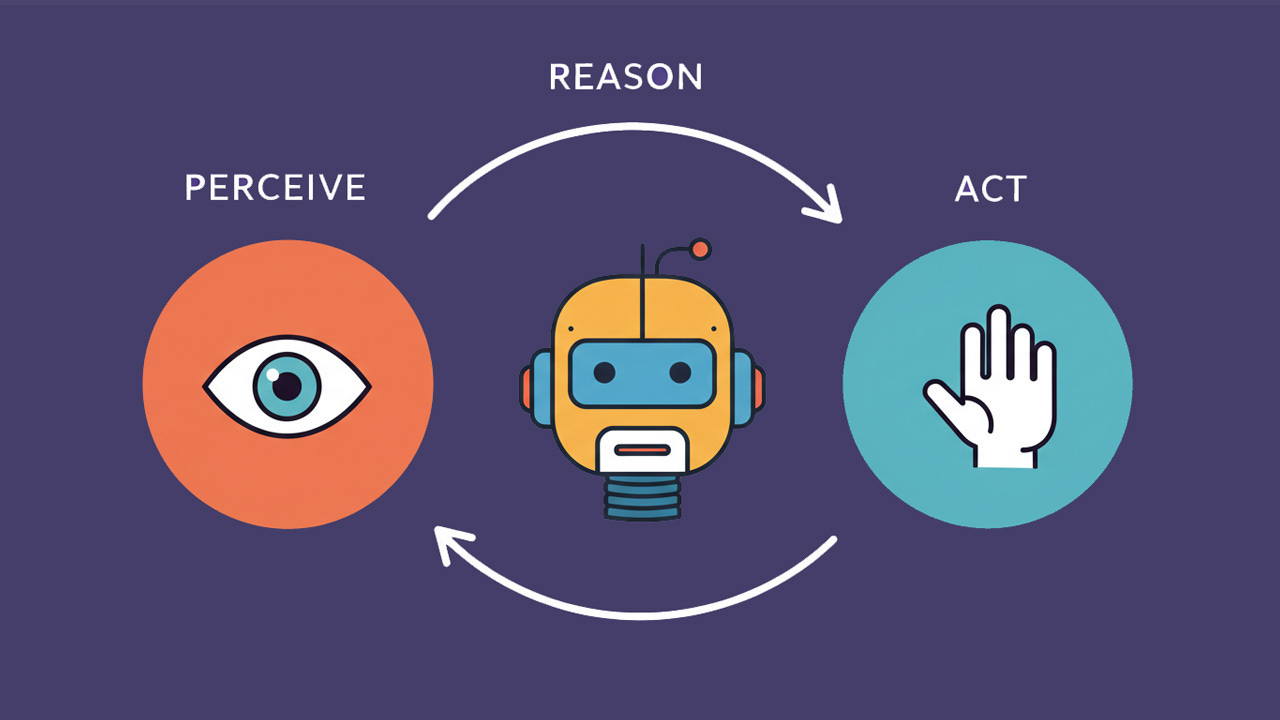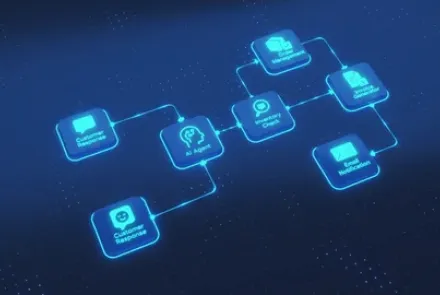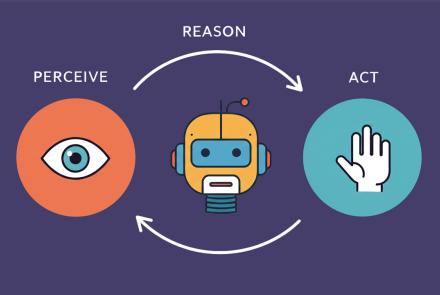Best no-code platforms for AI agent development
Building AI agents traditionally demands programming expertise in areas like machine learning, API integration, prompt engineering, vector search, dialogue flow, and backend infrastructure. But no-code platforms democratize this: using intuitive drag-and-drop visual builders and natural language prompts, creators can rapidly build agents without writing a single line of code. Whether you're automating customer support, internal workflows, decision-making bots, or personal assistants, today's no-code AI agent tools have you covered.
Below are the top no-code and low-code platforms in 2025—ranging from emerging startups to big-tech ecosystems—that simplify AI agent development for non-technical users.
1. StackAI – No-code AI for business automation (Startup Spotlight)
Best for: Organizations and industries like construction, insurance, local government—non-technical sectors seeking AI-powered task automation.
StackAI is a San Francisco-based startup with a no-code platform that enables companies to build AI agents for tasks like data entry, content aggregation, and classification. These agents integrate with tools such as Snowflake and Salesforce Business Insider.
The platform has gained significant traction—in May 2025, StackAI raised a $16 million Series A funding round led by Lobby VC, reflecting increasing investor enthusiasm for no-code AI automation across various industries Business Insider.
Why it stands out:
Specifically tailored for business workflows where users may lack technical backgrounds.
Emphasizes rapid deployment and integration into familiar enterprise systems.
Strong financial backing suggests continued innovation and stability.
2. Microsoft Copilot Studio – AI agents within the Microsoft ecosystem
Best for: Enterprises deeply embedded in Microsoft 365, Teams, Dynamics, and Power Platform looking to enhance productivity with AI agents.
Copilot Studio offers a no-code/low-code graphical interface to create intelligent agents. These agents automate workflows, analyze business data, and integrate seamlessly with Microsoft tools konverso.aiThe GuardianIT Pro.
At Google Cloud Next 2025, Microsoft’s counterpart announced similar tools like Vertex AI’s Agent Development Kit and Agentspace IT Pro, but within the Microsoft domain, Copilot Studio emerged earlier and is already in use by enterprises such as McKinsey and law firms The Guardian.
Highlights:
Natural-language and visual development for creating agents.
Strong enterprise compliance, security, and deployment tools.
Built-in integration with ubiquitous Microsoft products.
3. n8n – Open-source workflow automation meets AI
Best for: Users seeking powerful automation with visual programming; ideal for both non-technical users and those who can add custom code.
n8n is a flexible, open-source automation platform where users build workflows visually. It supports over 400 integrations—including with AI services like GPT engines—and can run on-premises for full control Apify BlogTekrevolToolJet.
Strengths:
Visual drag-and-drop interface makes setup intuitive.
Supports scripting in JavaScript or Python for advanced customization.
Offers both free self-hosted versions and affordable cloud plans starting around €20/month Apify BlogToolJet.
Excellent for automating tasks like document processing, notifications, and database updates with AI logic.
4. Flowise (and Langflow) – Visual, open-source AI agent builders
Best for: Users who want visual AI workflows, support for LLMs, and RAG (retrieval-augmented generation) without code.
Flowise is an open-source, drag-and-drop platform for building agents and workflows. It supports multiple LLMs, vector databases, templates, human-in-the-loop features, and analytics ToolJetBudibaseCybernews.
Langflow is another visual platform—ideal for constructing AI-centric workflows by connecting language models, APIs, and data sources. It integrates with LangChain and supports RAG and multi-agent setups—all without coding Apify BlogAI Agents NewsBudibase.
Why they shine:
Both are open-source and free, making them budget-friendly for experimentation and prototyping.
Offer visual flowbuilders while retaining flexibility and extensibility.
Support multiple AI models and deployment contexts.
5. MindStudio (by MarkTechPost) – Visual, multi-modal agent builder
Best for: Teams needing AI agents combining language, image, and voice capabilities, built and deployed via a visual interface.
MindStudio provides a drag-and-drop interface to design and deploy agents that handle text, image, and voice interactions. It supports deployment as web apps, browser extensions, APIs, and includes over 100 templates and compliance features like SOC II AI Agents News.
Key strengths:
Multi-modal agent creation—all via no-code visual tools.
Fast to get started with templates and intuitive design.
Compliant with enterprise-level security needs.
6. Dify – Open-source visual AI agent platform
Best for: Teams and creators focusing on rapid prototyping and deployment of AI workflows and agents.
Dify offers a visual canvas to build AI agentic workflows. It’s open-source, supports RAG pipelines, workflow observation, collaboration, and model management AI Agents NewsTekrevol.
Advantages:
Fully open-source—free to use with robust community support.
Collaboration tools and observability features help manage agent behavior.
Ideal for building AI-native apps from conception to deployment.
7. Relay.app – AI-powered workflow automation for business
Best for: Small teams and marketers automating marketing, ops, and internal workflows.
Relay.app offers a visual builder with integrated LLM support (e.g., GPT-4, Claude), human-in-the-loop review, and 100+ app integrations. It caters to business users automating CRM, email, document generation, and more Techpilot.AIbizway.io.
Why use it:
Very easy onboarding for non-technical users.
Combines AI automation with widely used business tools (Gmail, Slack, Notion).
Pricing is simple, starting free with paid tiers like $9/month Techpilot.AIbizway.io.
8. Bizway – No-code AI workflows for solo professionals and creators
Best for: Solopreneurs and creators needing automated workflows for content, SEO, financials, and strategy generation.
Bizway offers visual workflow building components like Knowledge, Instructions, Workflow Inputs, and Doc Output, with dashboard analytics—perfect for automating content generation, campaign ideation, or data summary tasks bizway.io.
Highlights:
Tailored for individual creators and small businesses.
Easy to create AI-enhanced business workflows.
7-day free trial for evaluation.
9. CustomGPT – Domain-trained AI chat agents
Best for: Companies seeking conversational agents trained on domain-specific data without building from scratch.
CustomGPT lets users create AI agents (e.g., customer support bots) trained on proprietary knowledge bases. You can fine-tune agents with custom instructions and integrate them smoothly into internal systems Airtable.
Advantages:
Straightforward no-code interface for fine-tuning and deployment.
Ideal for embedding AI in support workflows or onboarding.
Pricing starts around $99/month for reasonable usage.
10. Voiceflow, ManyChat, Landbot, Tars – Conversational AI specialists
Best for: Marketers and support teams building voice or chat-based conversational agents.
These platforms specialize in chatbot design—Voiceflow for voice assistants across platforms, ManyChat for marketing bots, Landbot for interactive web chatflows, and Tars for lead generation chatbots—all via drag-and-drop flows and multi-platform deployment bizway.ioDesignRush.
Strengths:
Visual conversation design with templates.
Seamless deployment to channels like WhatsApp, Messenger, web, and voice platforms.
No technical overhead—accessible to marketers and business users.




